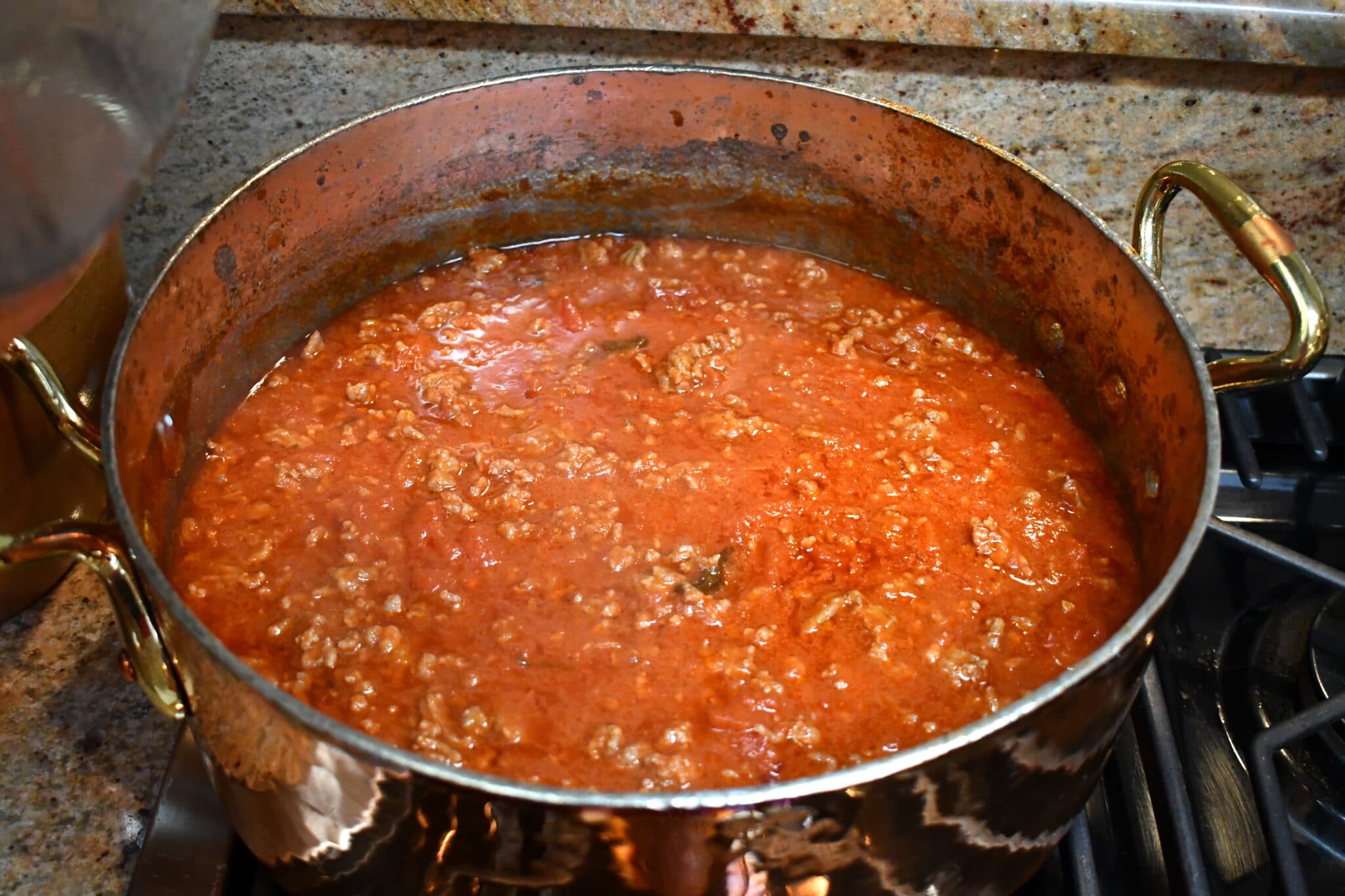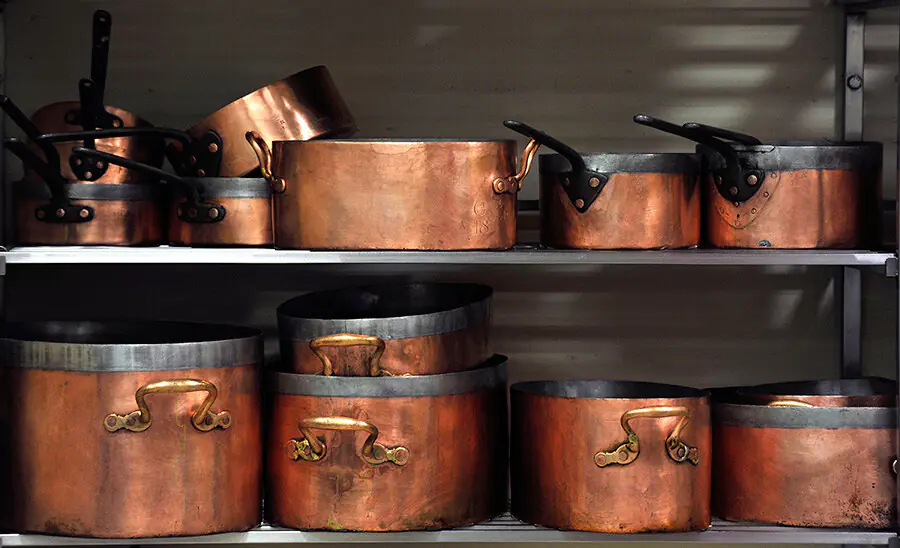Do you think this skillet is dirty?
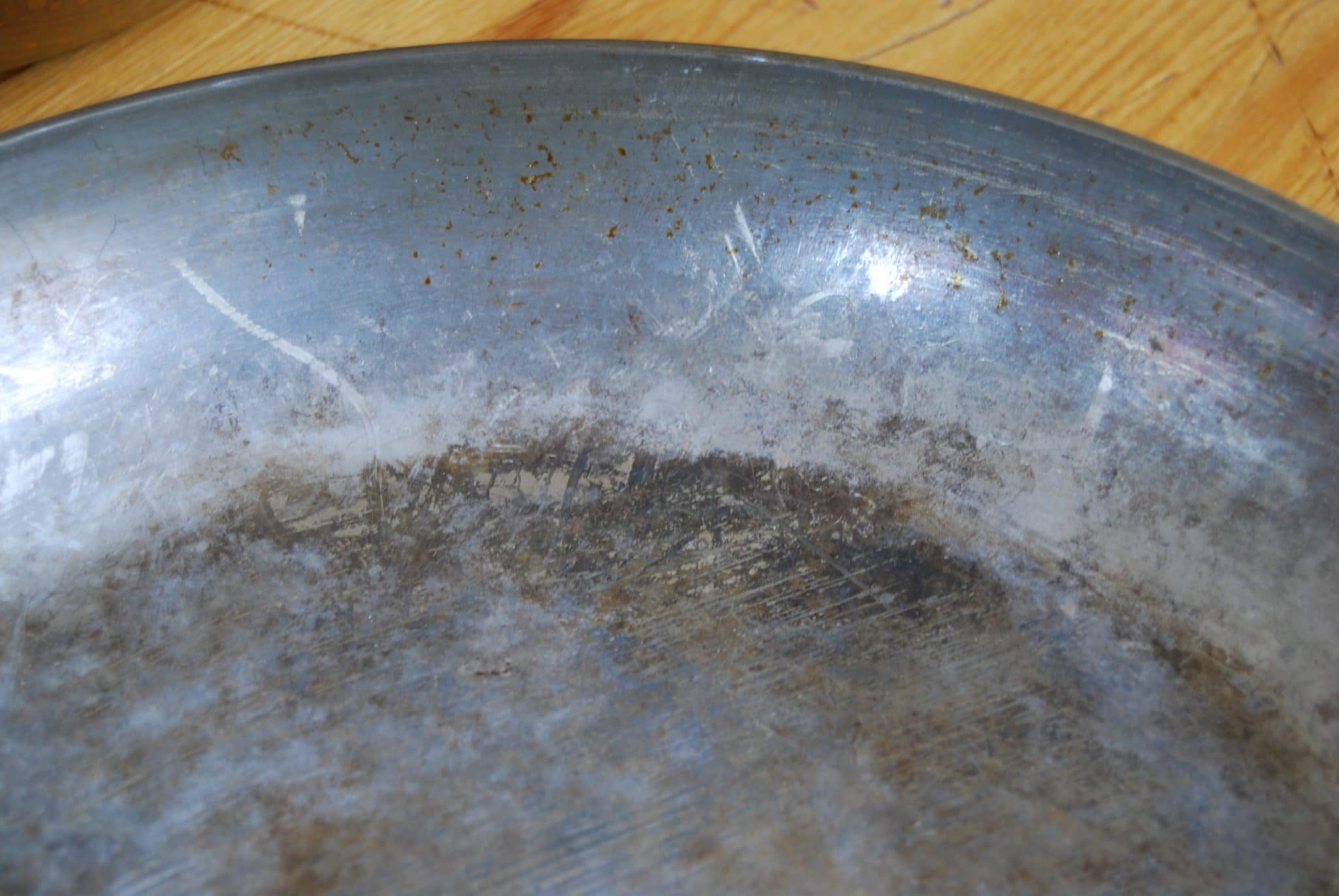
I sure did. When I saw this brown stuff on my skillet I thought it was gross. I don’t consider myself a neat freak in the kitchen but one thing I cannot stand is cooking with dirty tools. So the first time this showed up on my skillet, I went to work: hot water, soap, a good soak, and the business side of a no-scratch blue scrub sponge. After a few minutes of diligent effort the brown stuff faded, but it took more scrubbing than I really feel is good for tin. But at least it wasn’t brown any more!
The next time the brown stuff showed up, I had second thoughts about scrubbing it away again. Tin cleans up pretty easily and after a good soak there’s seldom a need to scrub it hard, so whatever this was, it was unusual. I washed the pan well and dried it thoroughly as I always do and then I took a really good look. I couldn’t see any lumps of food residue, just a wash of brown that was darker in some parts than in others. I ran my fingertips over the surface and the brown areas felt exactly like the silvery areas — smooth and dry. The brown stuff, whatever it was, was more like a color than a substance I could feel. What could it be?
I think my tin-lined skillet has seasoned.
“Seasoning” in the context of cookware refers to the intentional (and inevitable) buildup of a layer of hardened oils and fats on a cooking surface. When you cook, the oils and fats on the surface of the pan heat up and will eventually polymerize, linking up into a stable structure almost like a smooth plastic. At the molecular level, the polymerized oils bond firmly to the metal below and to other oil molecules, but have no other “loose ends” to attach to food, creating a close-to-nonstick cooking surface.
Seasoning is doubly beneficial — and practically required — for cast iron and carbon steel pans because in addition to creating a slick cooking surface it also helps prevent rust by sealing off the metal from water. You’ll read a lot of how-to guides online about how to season your pan, which entails thoroughly stripping any existing seasoning and then applying and heating successive layers of oil until the new seasoning is sufficiently thick and properly hardened. After that, the protocol is to clean the pan gently, avoiding acids and detergents (sometimes even forgoing soap and water altogether) that would attack the seasoning layer and require starting the process again.
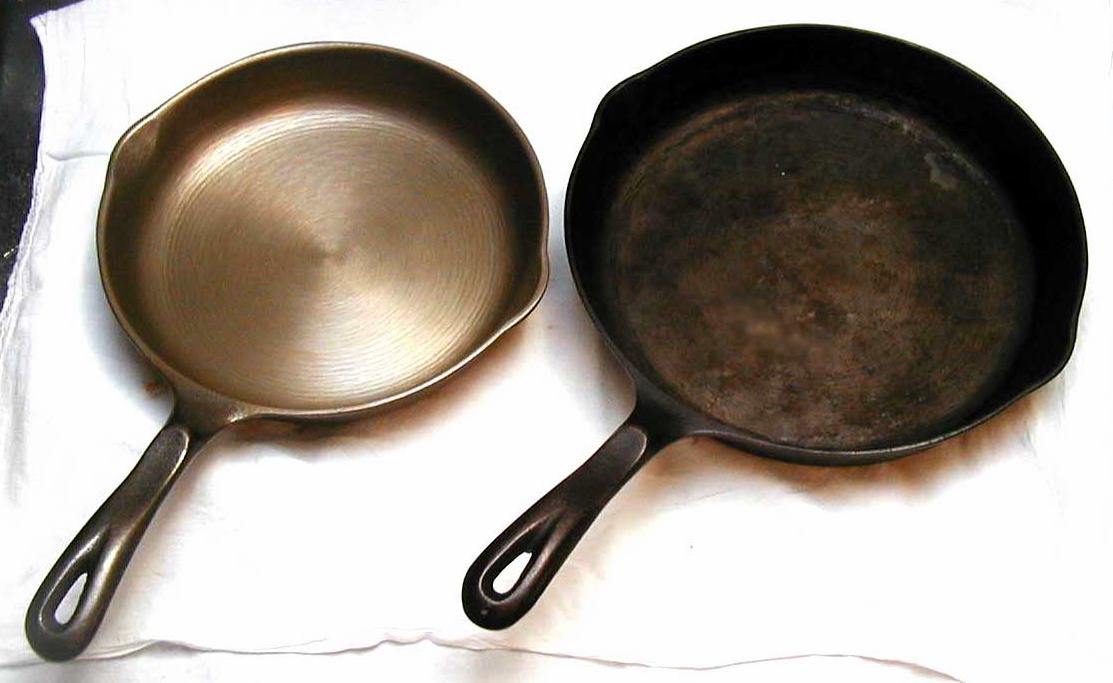
If this sounds like a lot of work, it is, but the reward is a pan that is virtually non-stick. You’ll find paeans written by people who love their well-seasoned cast iron and carbon steel because food just slides right off. There’s even a cult of the sacred seasoned aluminum omelet pan kept for eggs only and never washed with soap and water, only wiped out with a paper towel. (I mock, but with affection — I myself am a member of the cult of vintage tinned copper and shouldn’t be pointing any fingers.)
Sounds great, right? Why don’t we do this for every pan, particularly the notoriously sticky stainless steel? Well, this is where the whole seasoning psychology gets interesting to me: you see, polymerized oil is brown, and brown stuff is dirty. In the US, we can’t stand to see any residue on pans because we’ve internalized the notion that a pan that is not shiny silver is unclean. In my opinion, the whole notion of “seasoning” is a rebranding effort to overcome the US phobia of uncleanliness, and it’s sort of working: while bare cast iron and carbon steel are silvery gray, we’ve normalized their working appearance as dark brown. In other words, we’ve accepted that cast iron and carbon steel in normal use looks dirty.
This seasoning campaign is ongoing with stainless steel but it’s an uphill battle. Check out this article in Epicurious about the “internet trick” that magically renders a stainless steel pan nonstick: “All you have to do, according to the internet, is season the pan in the same way you would season a cast iron skillet.” This is a revelation for the author: “This is where you do a double-take. At least, that’s what I did. A stainless steel pan that’s easier to clean and doesn’t use the strange—and probably, definitely unhealthy—compounds you find in nonstick pans? It sounded like a fairy tale.”
Enemy sighted: “strange” and “probably, definitely unhealthy” chemicals!
I’m making fun of Epicurious here, which is a little unfair — I’m a beginner cook myself and I can use all the help and reassurance I can get. But what strikes me is how disingenuous this article is and what it reveals about our fears about food and cooking.
You see, in US cooking culture, we’ve accepted that seasoning cast iron or carbon steel is a necessary step to make it usable, but in order to overcome our aversion to anything blighting the surface of bright and shiny stainless steel, we need to be told that the very same process with the very same result is now a strike against insidious toxic chemicals.
I can see the advertising tagline now: “Seasoning… The Non-Toxic Choice for You and Your Family!”
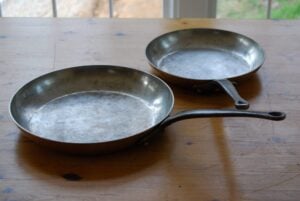 But this fairy tale nonstick magic comes at a price: you have to let your pans get a little dirty-looking. Even the converts at Epicurious acknowledge that this seasoning business is not for the faint of heart: “When the pan gets really gross (and it will, eventually), wash it with soap and water, but know that you’ll lose the nonstick coating and have to season the skillet again.” The article is accompanied by a photo of a stainless skillet with some tell-tale brown patches, hinting at the dark days that lie ahead.
But this fairy tale nonstick magic comes at a price: you have to let your pans get a little dirty-looking. Even the converts at Epicurious acknowledge that this seasoning business is not for the faint of heart: “When the pan gets really gross (and it will, eventually), wash it with soap and water, but know that you’ll lose the nonstick coating and have to season the skillet again.” The article is accompanied by a photo of a stainless skillet with some tell-tale brown patches, hinting at the dark days that lie ahead.
Well, folks, I’m living in those dark days, and I’m here to tell you: it’s not so bad. My skillets are building up a layer of seasoning because I use them for browning, which gets their surface temperature fairly high. It’s no surprise that some of the cooking oils are polymerizing and staying put even after I wash and dry the pan. The same thing would happen on steel or aluminum or any other surface — the variables are oil, temperature, and time.
And I’m fine with it. I’m keeping the seasoning in place because I think it’ll have the same effect that it does on a cast iron or carbon steel pan: a slick layer between the inorganic metal of the pan and the food I’m cooking. Of course, tin is already low-stick, so the seasoning layer is making a great cooking surface even better.
The lesson for me is to use some discretion with the appearance of the pan. Cooking at heat on tinned copper will polymerize oils, and in my opinion, it’s not worth removing the polymerized residue. These same oils are considered good for cast iron and carbon steel and we’re taught how to lay them down, but they’re considered aesthetically unpleasing on stainless steel, so we are taught to scour them off and then follow complex oiling rituals to compensate for bare steel’s innate stickiness.
The choice is yours. For my part, if my tinned copper pan is dirty from cooking, I fill it with hot soapy water and let it sit. After a good soak, food on the surface wipes away with a non-scratch sponge while dark brown oils become part of the pan’s non-stick surface. My experience is that my pans are getting better with use, and I want to encourage you to try the same.


